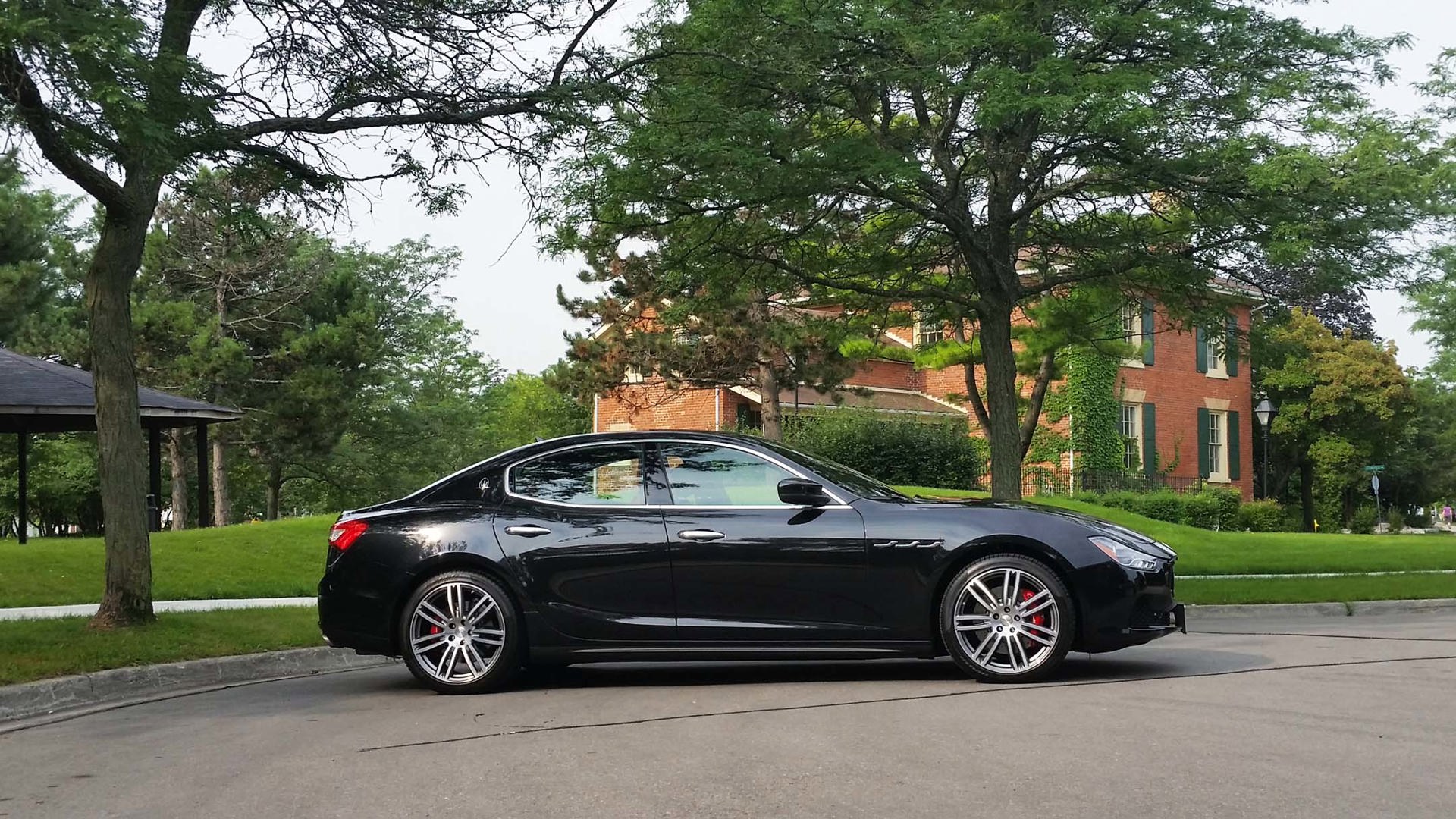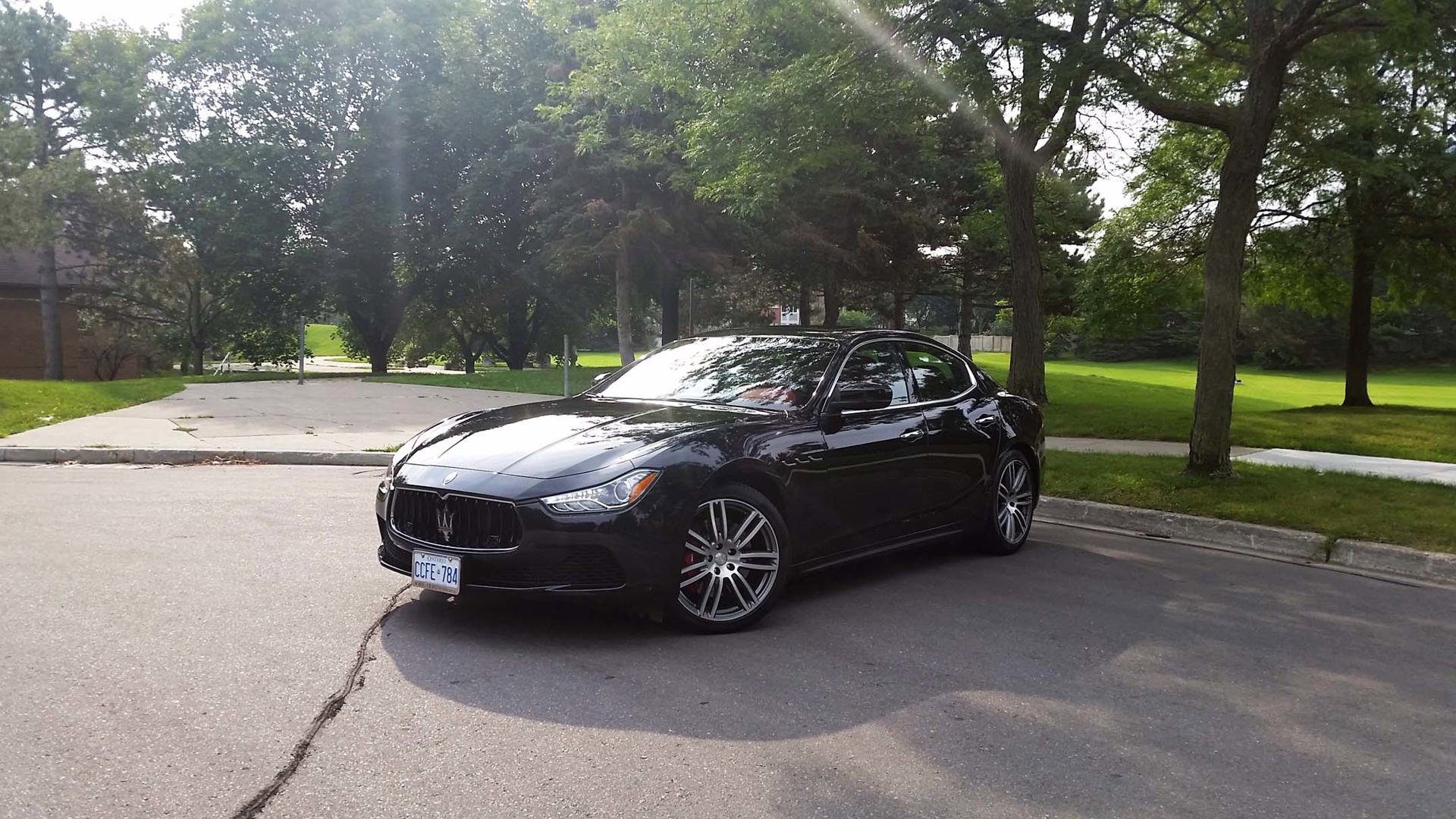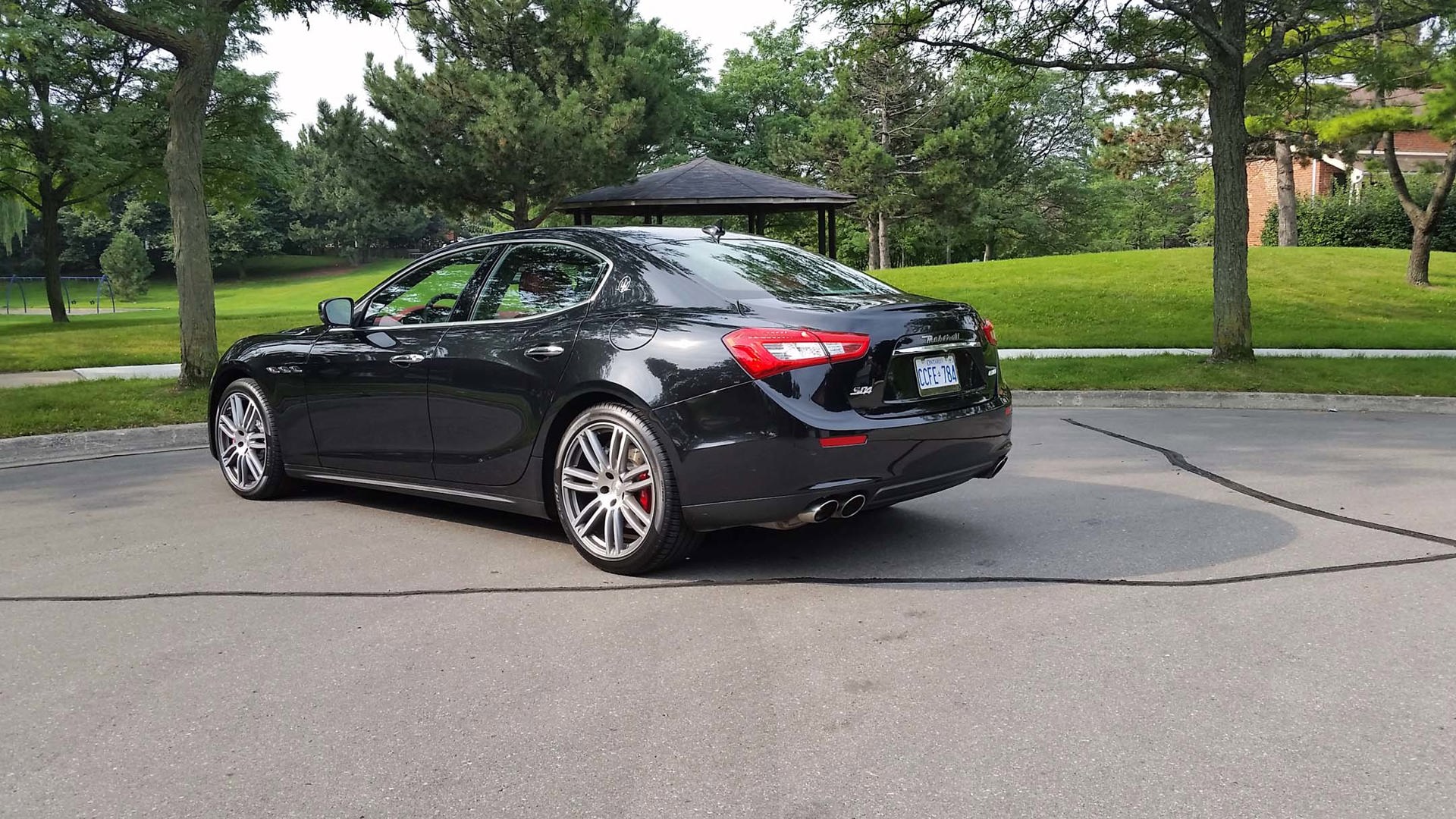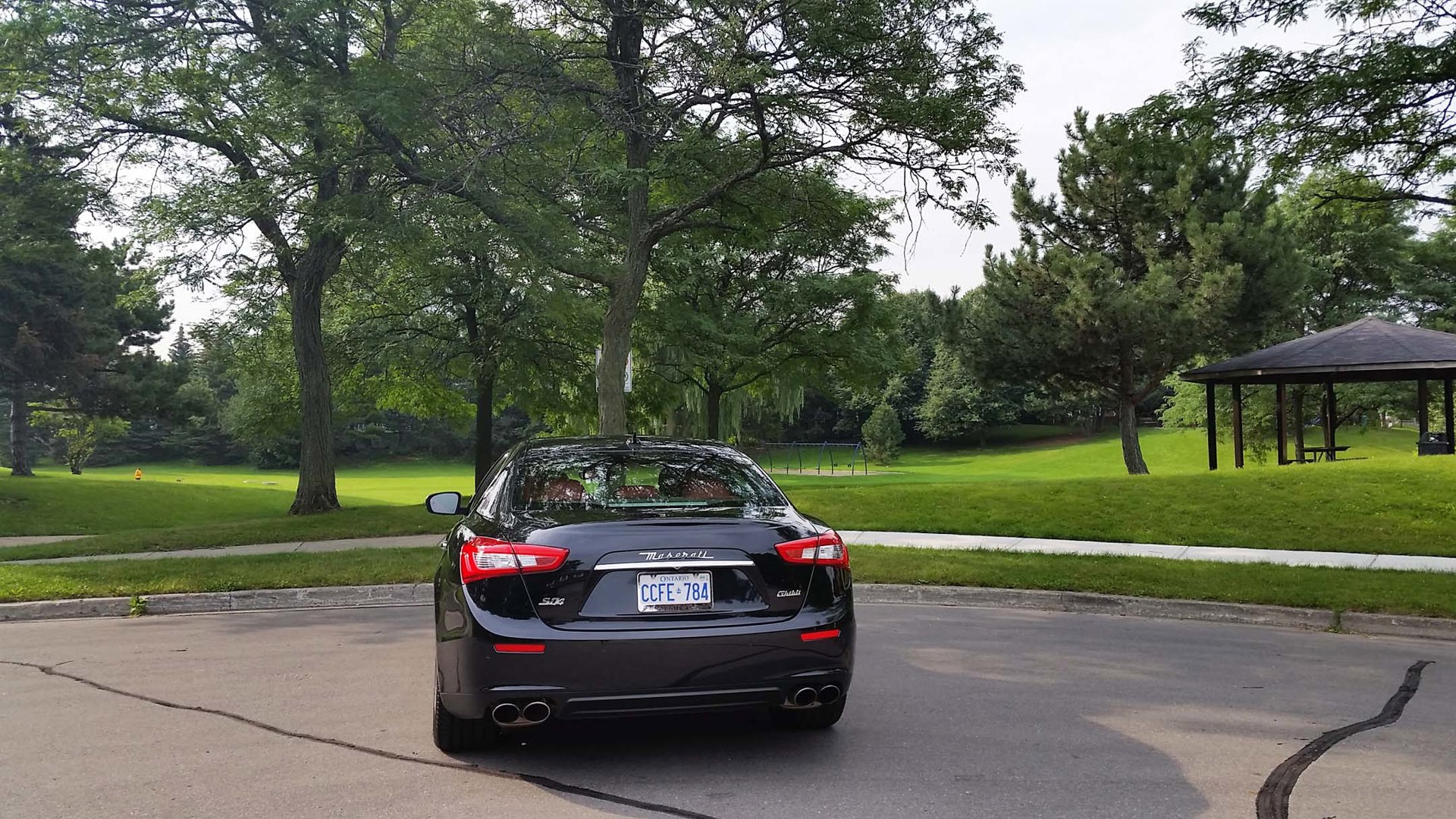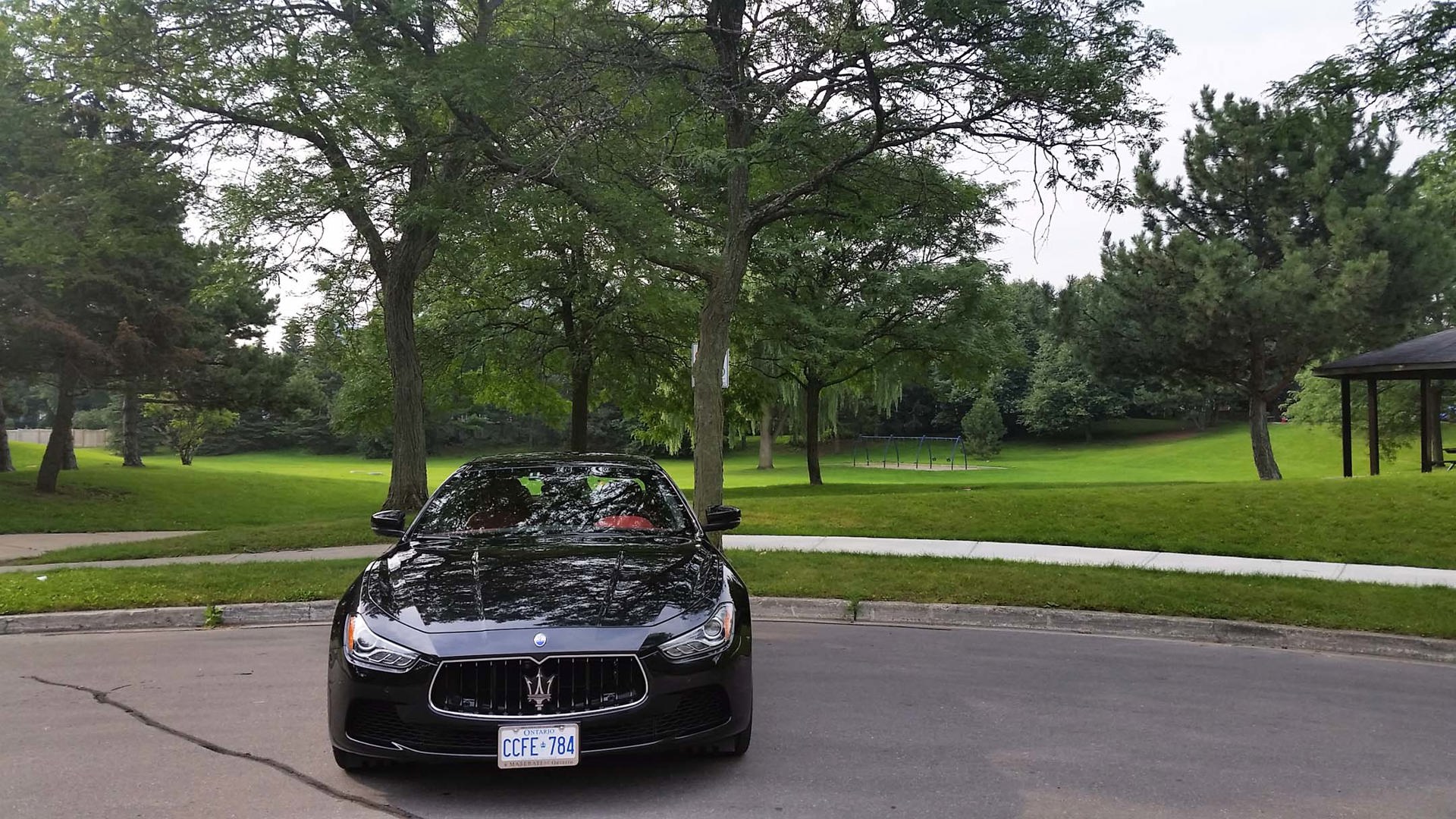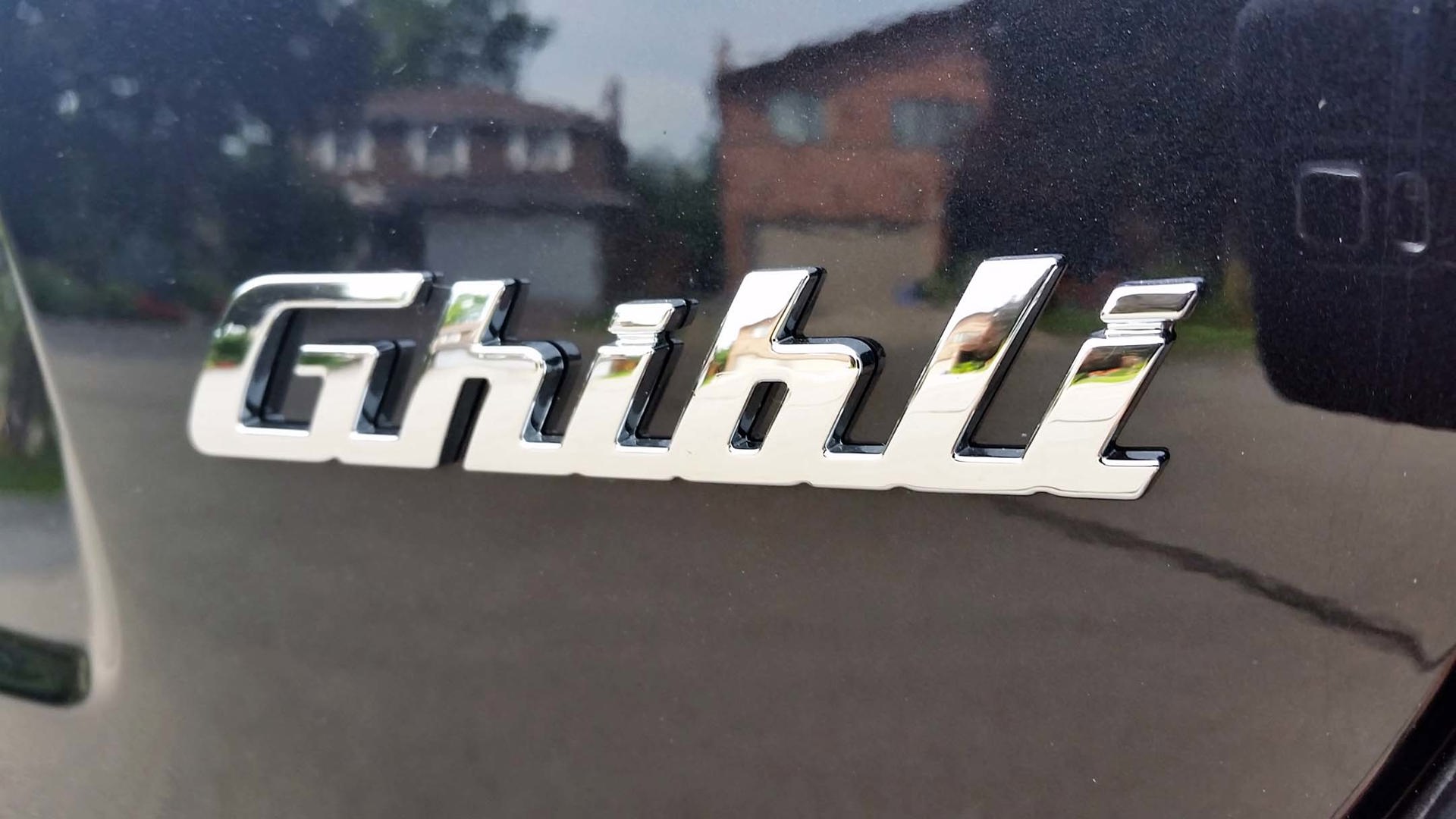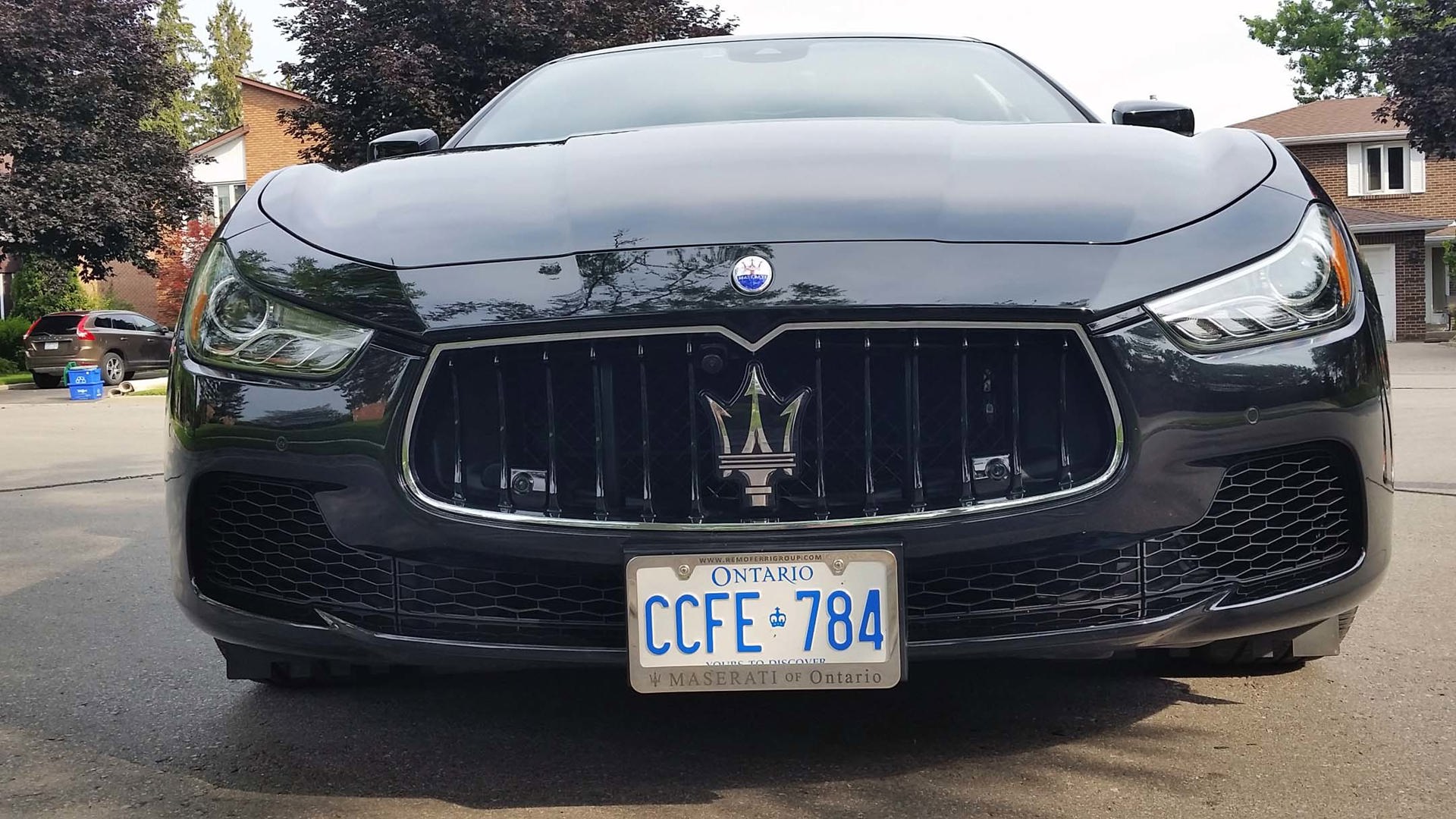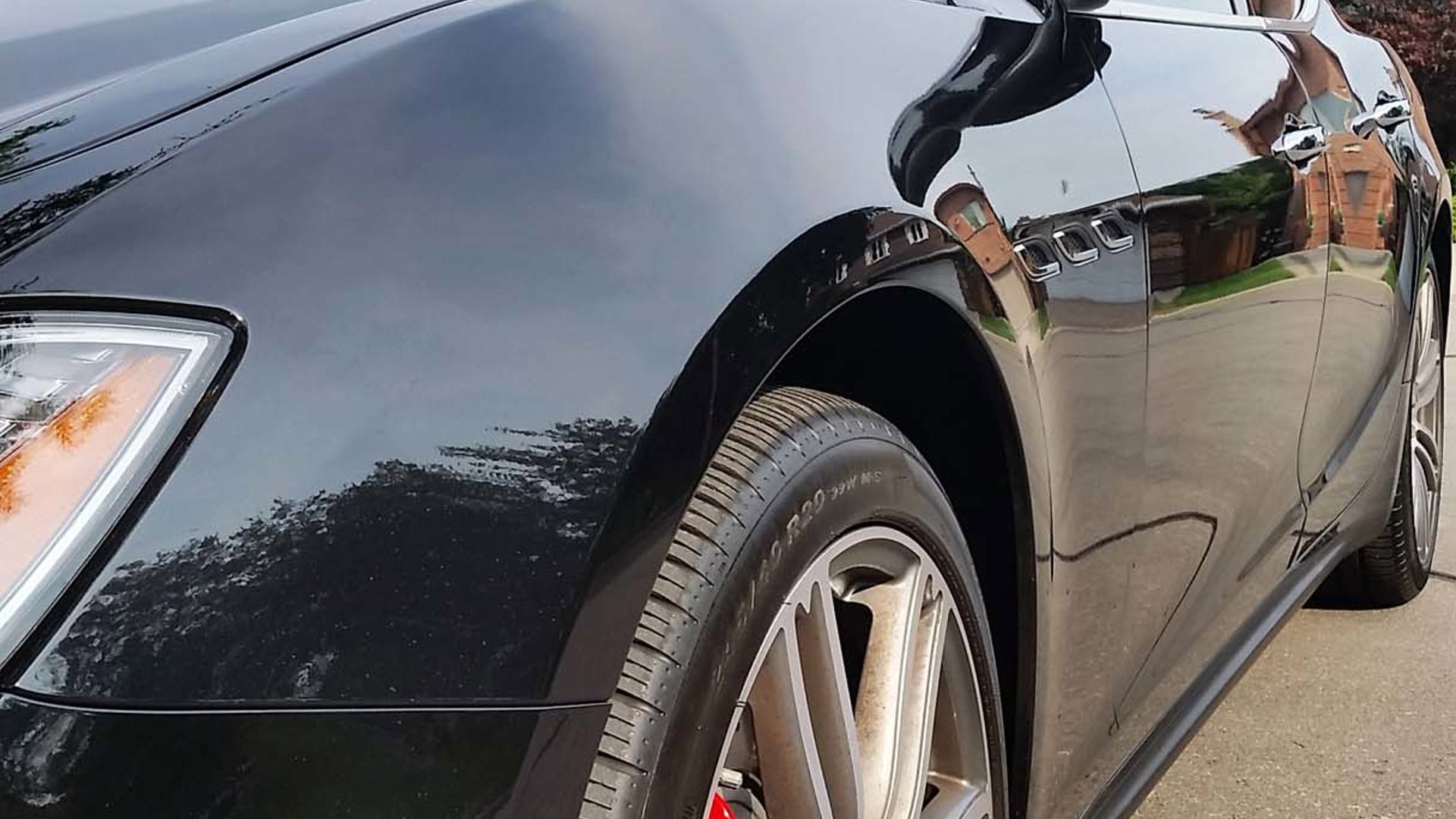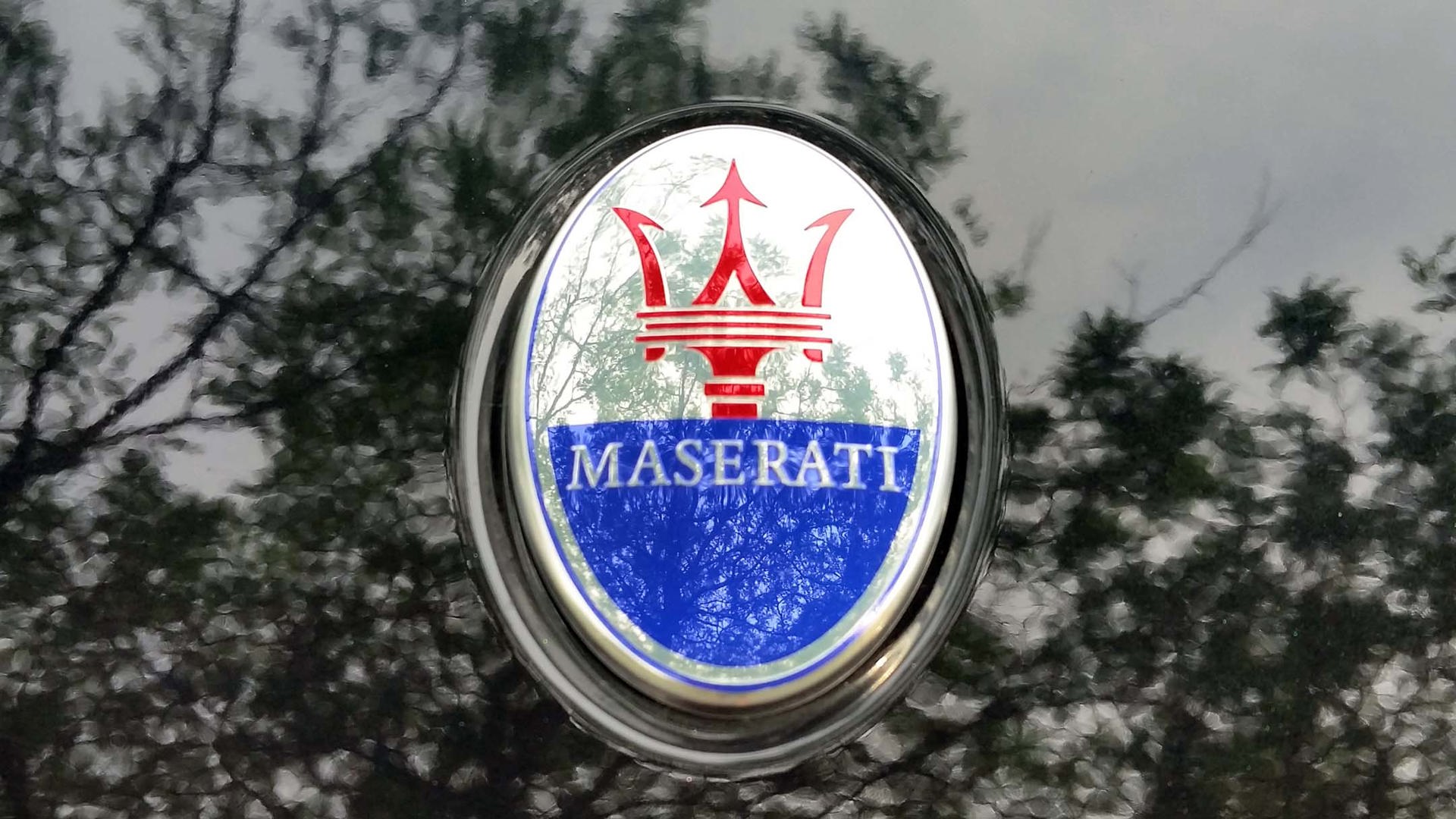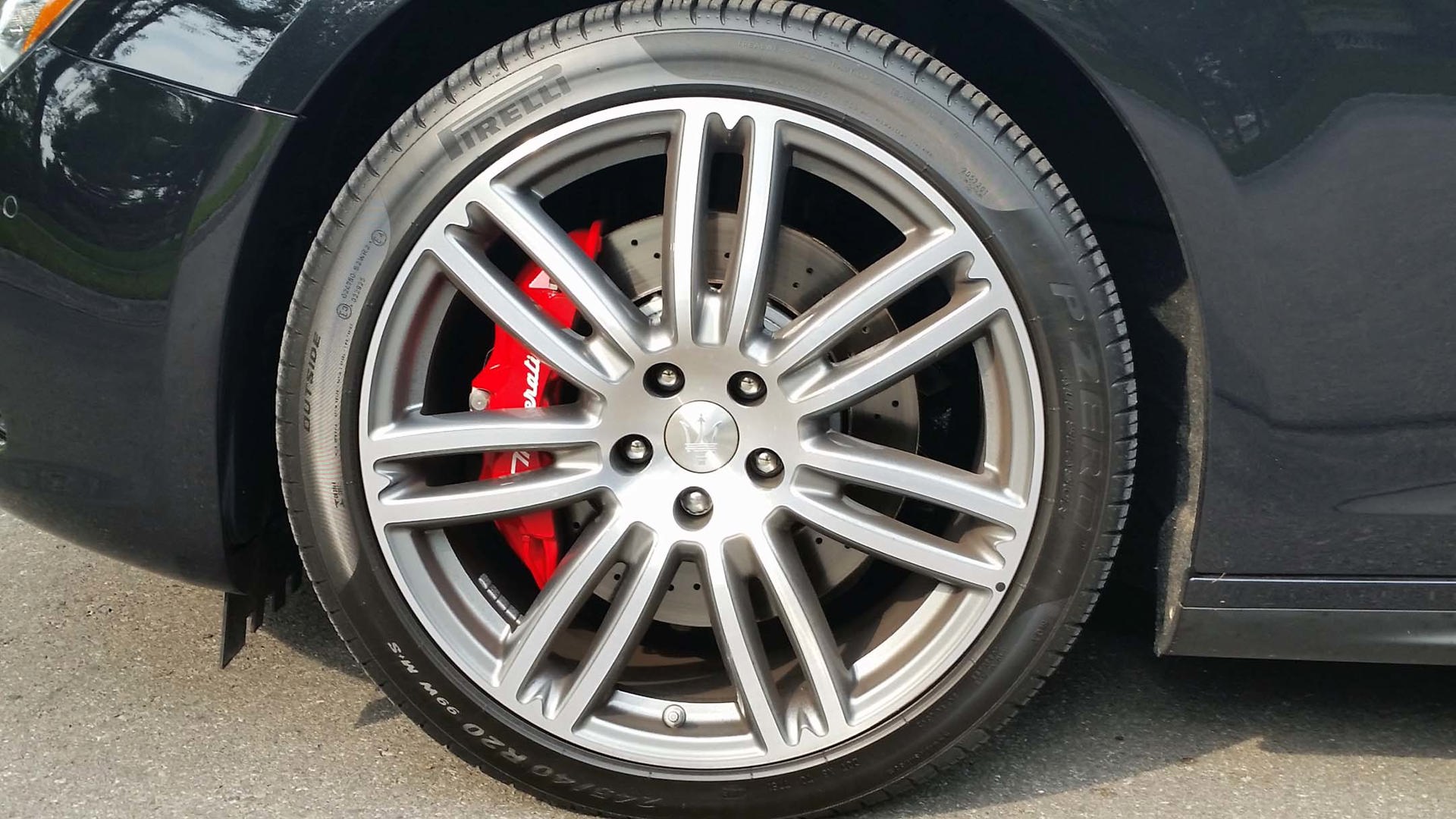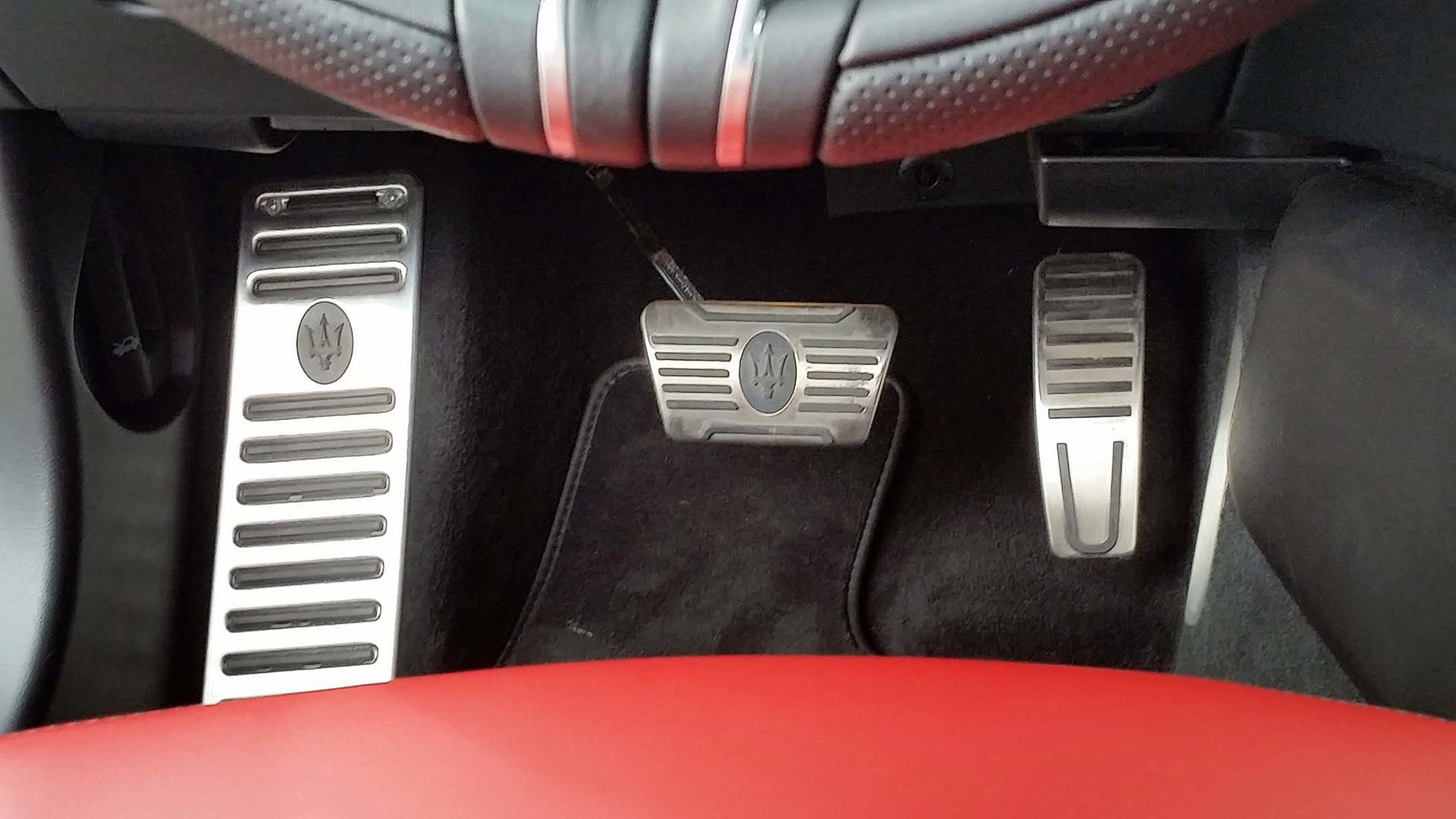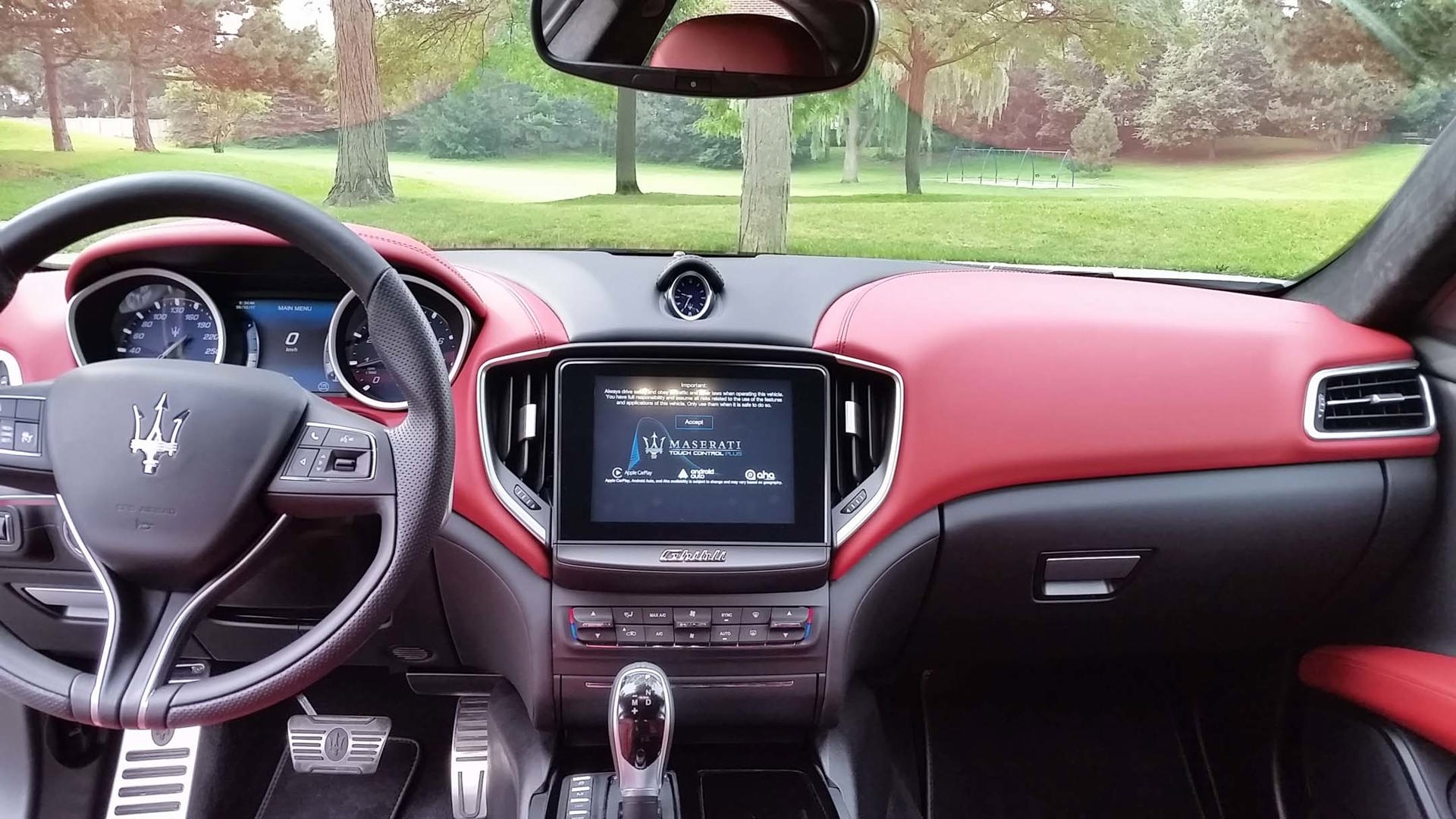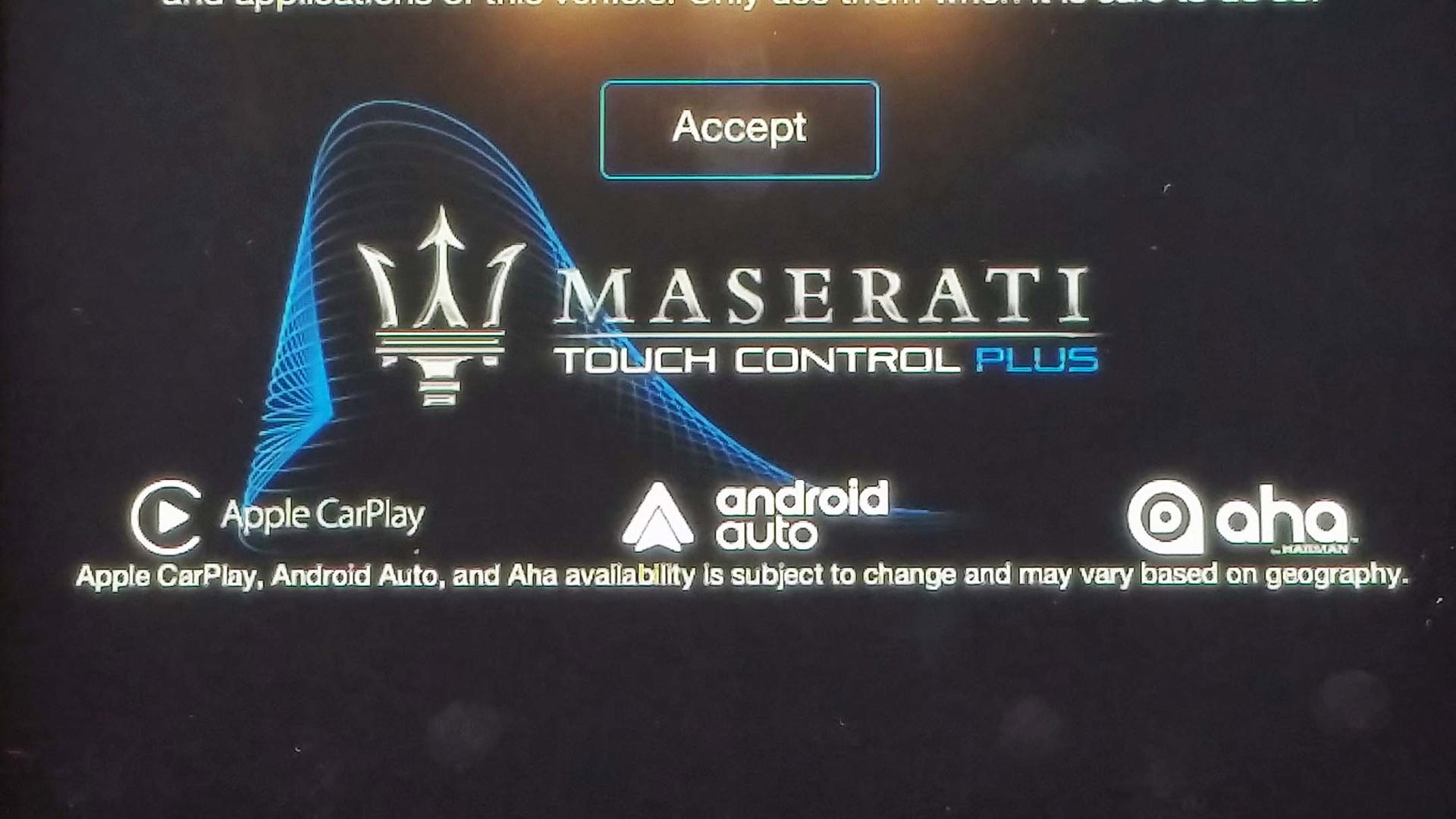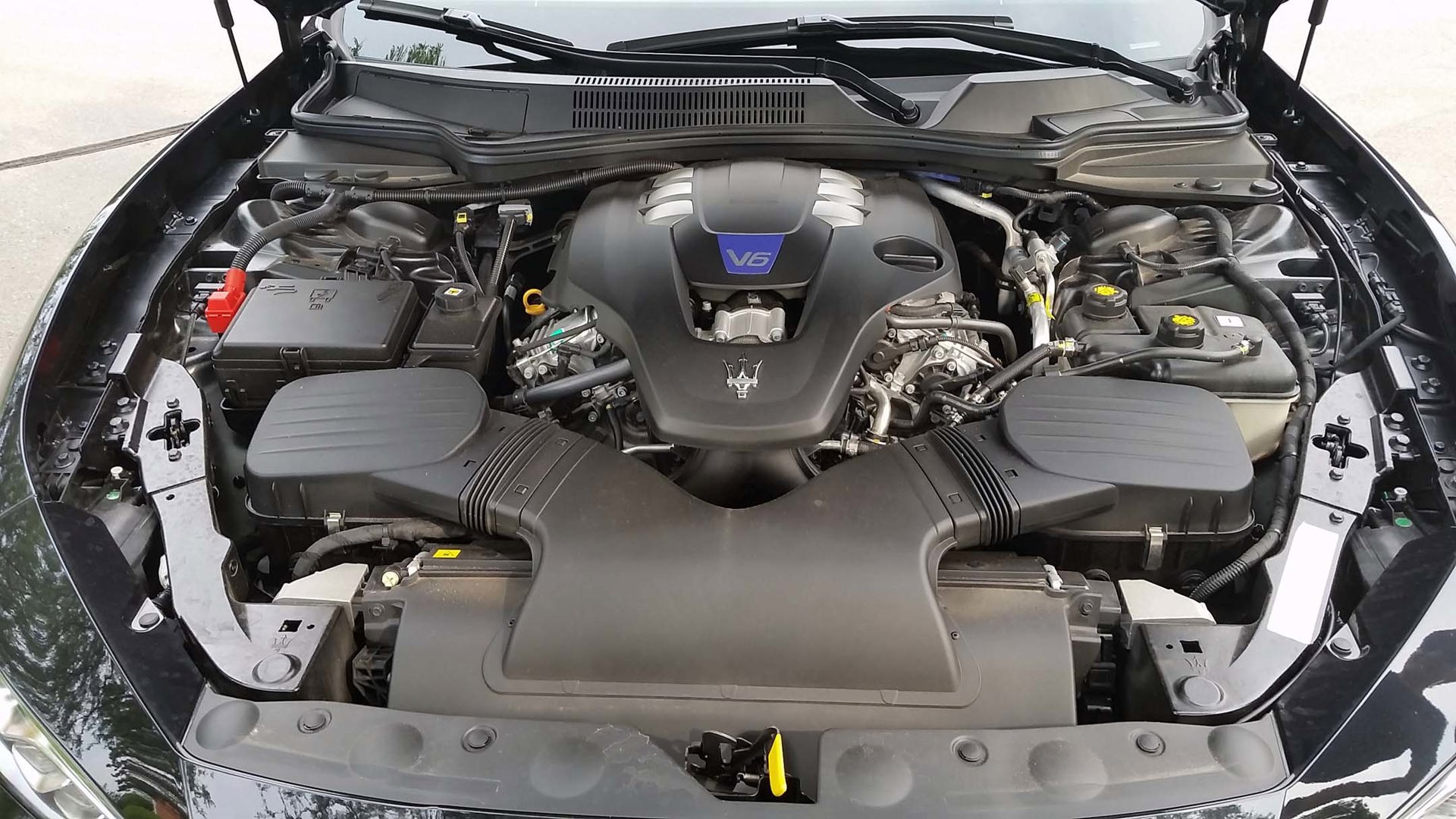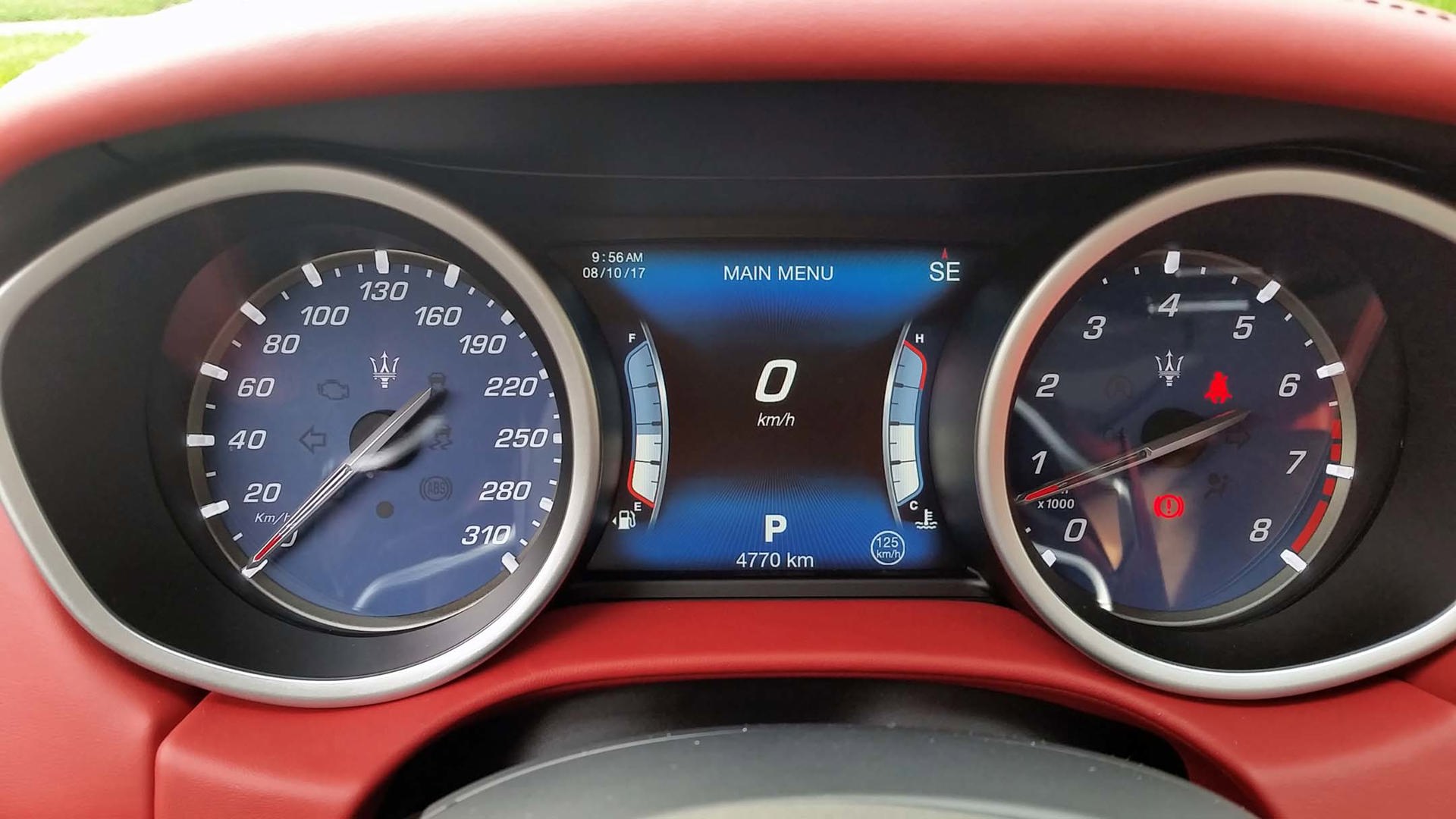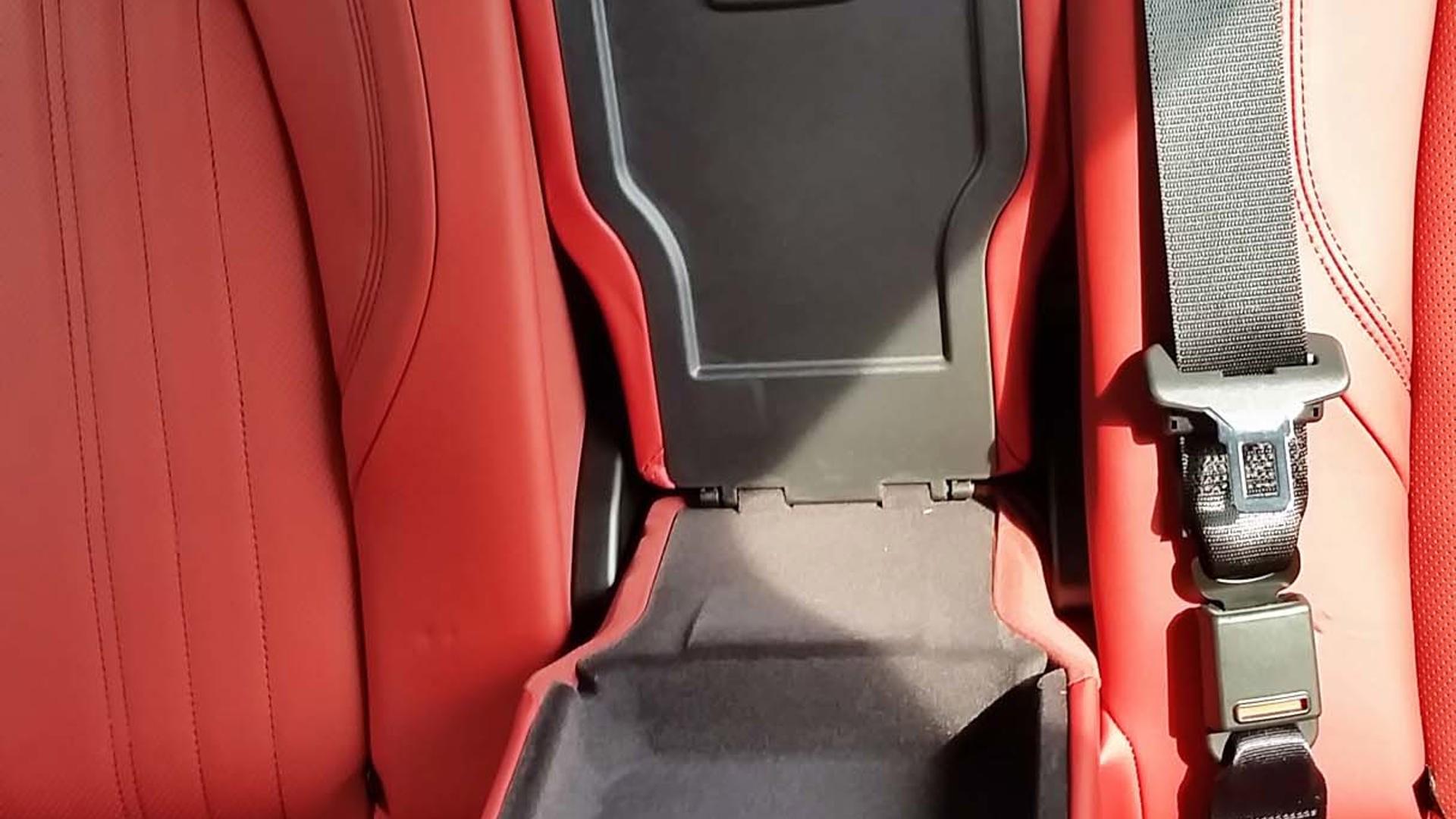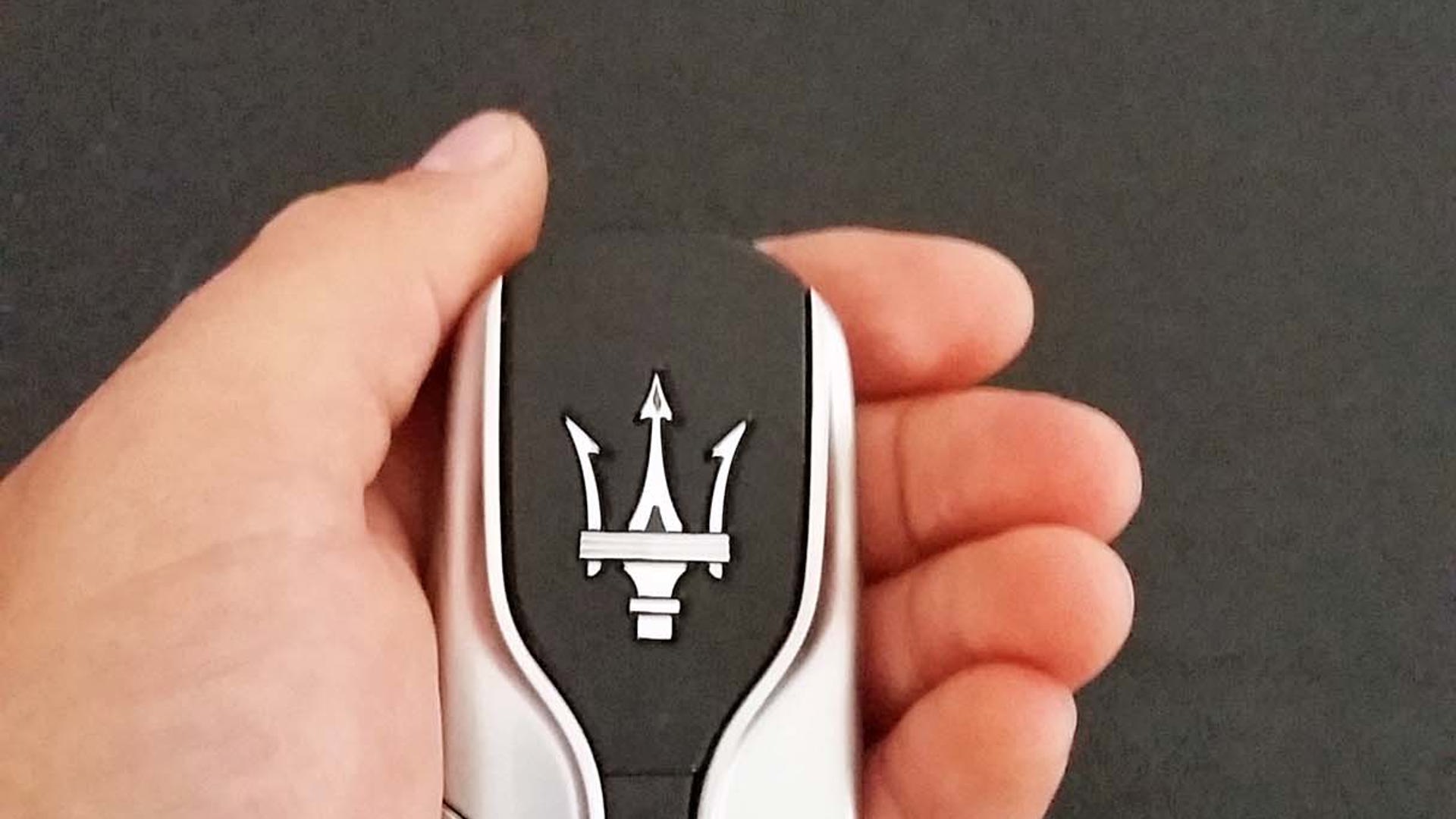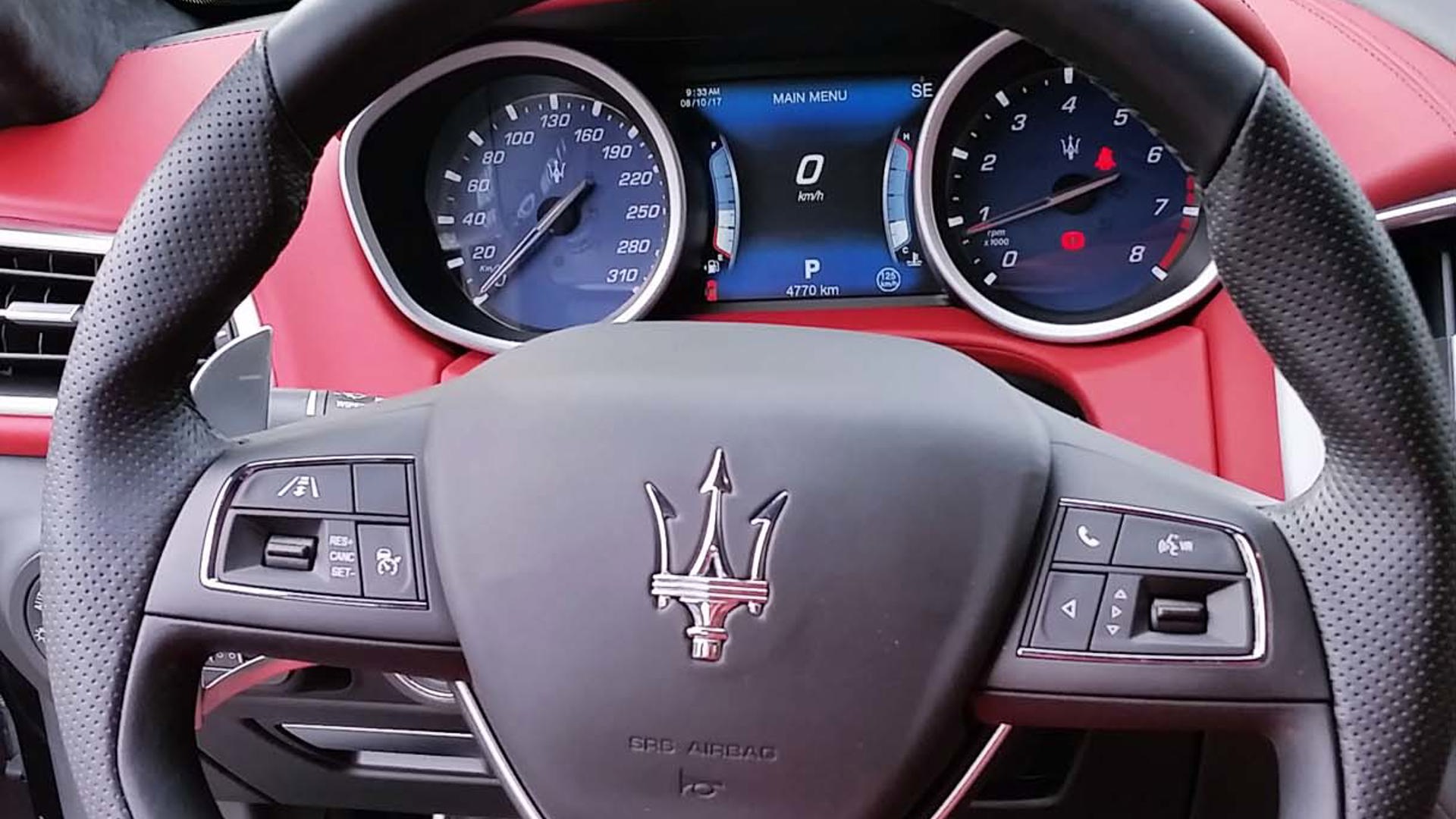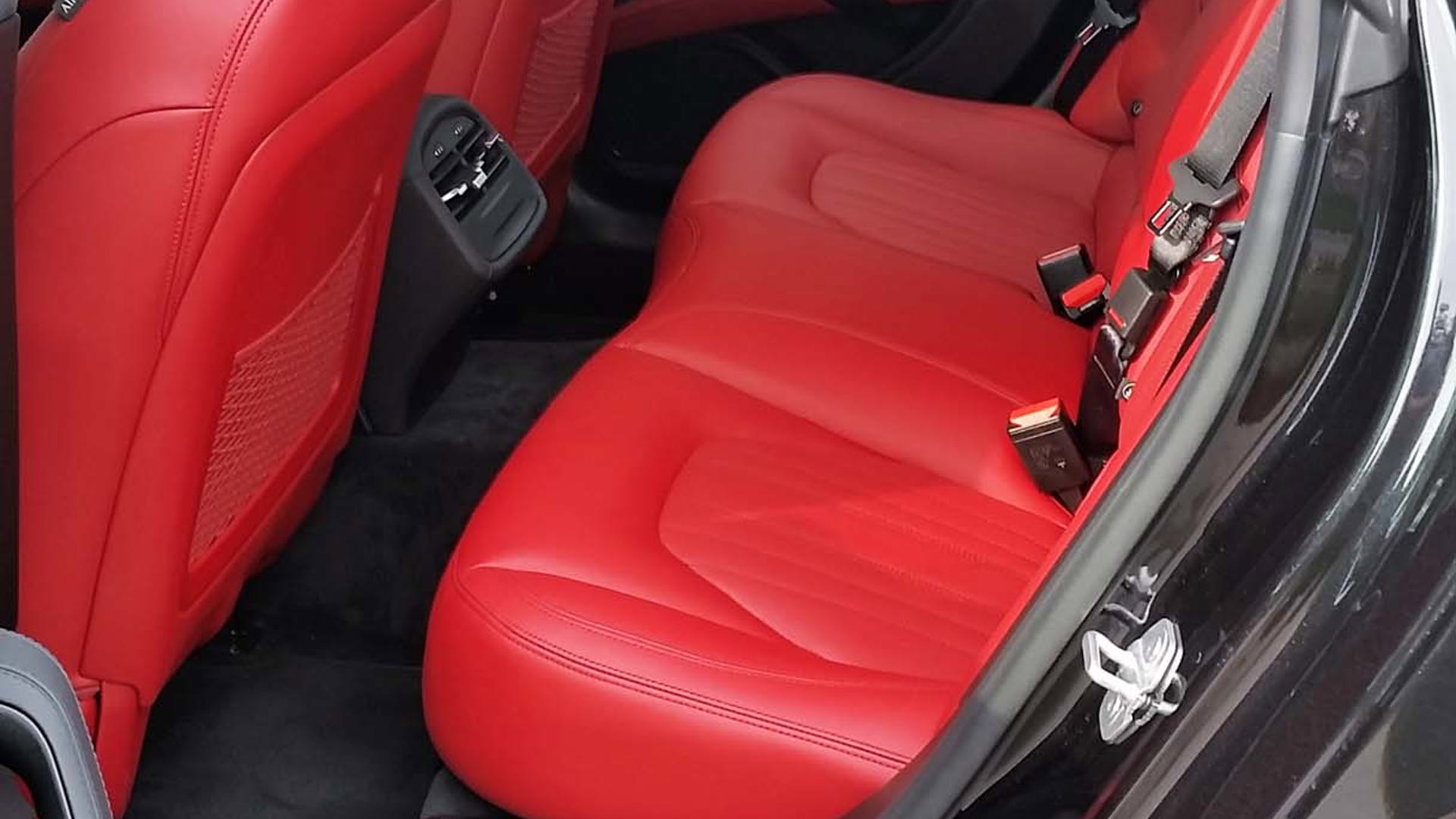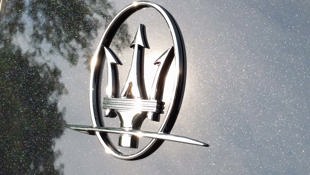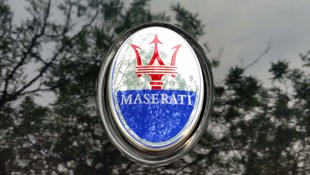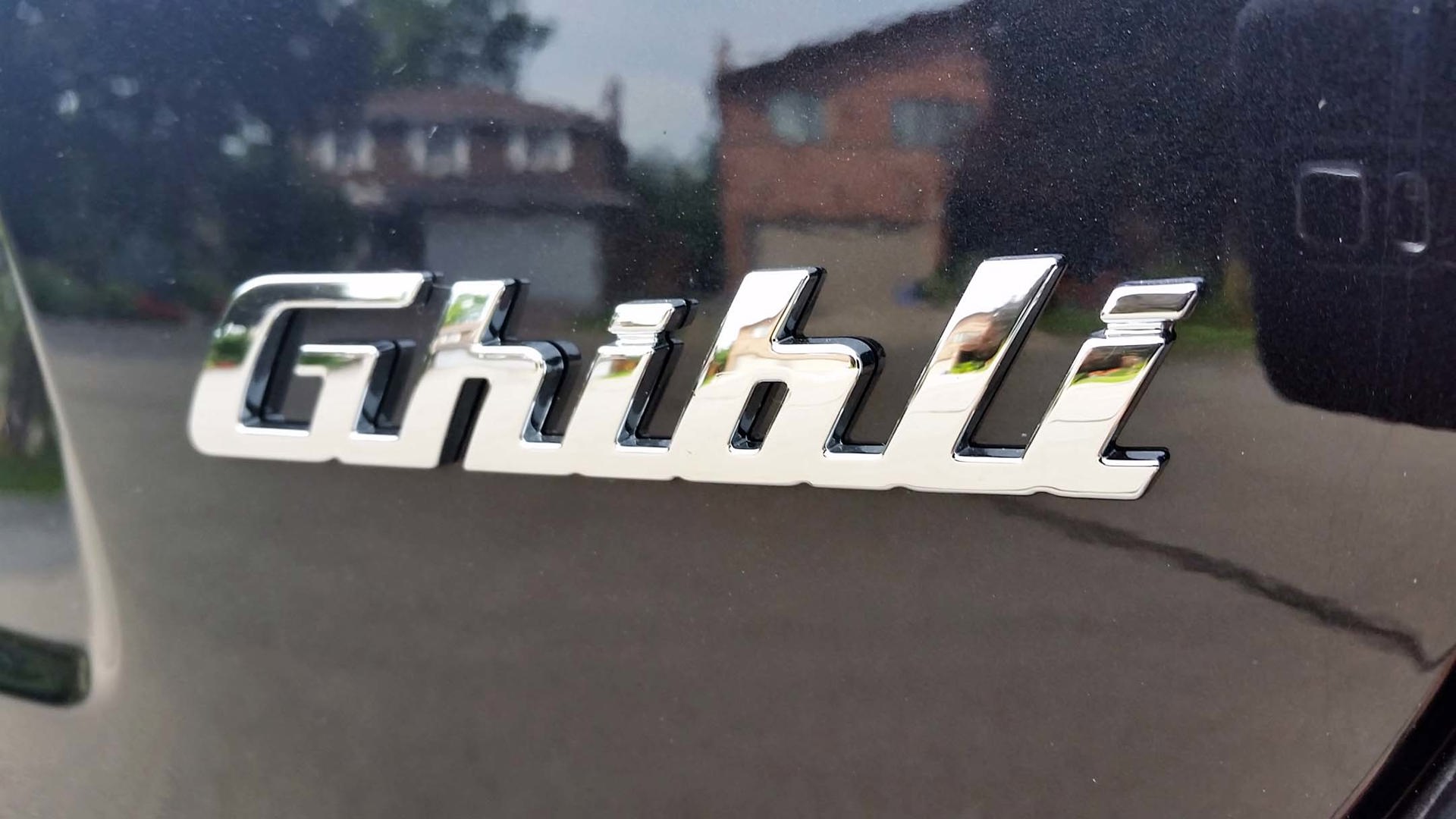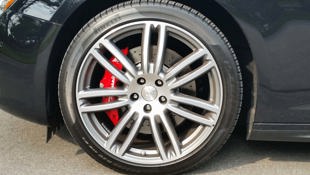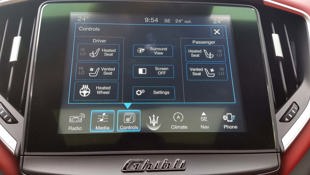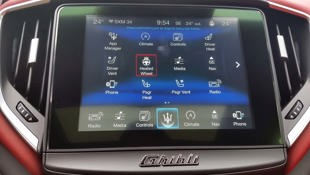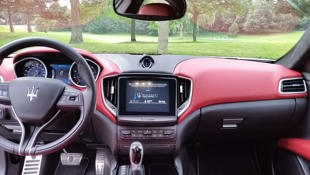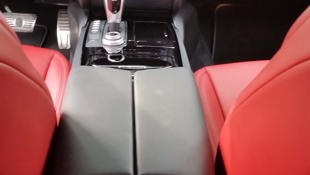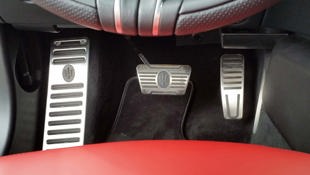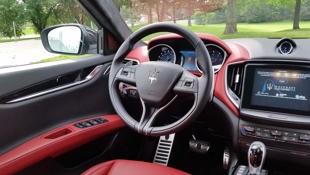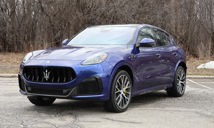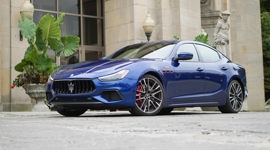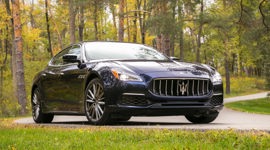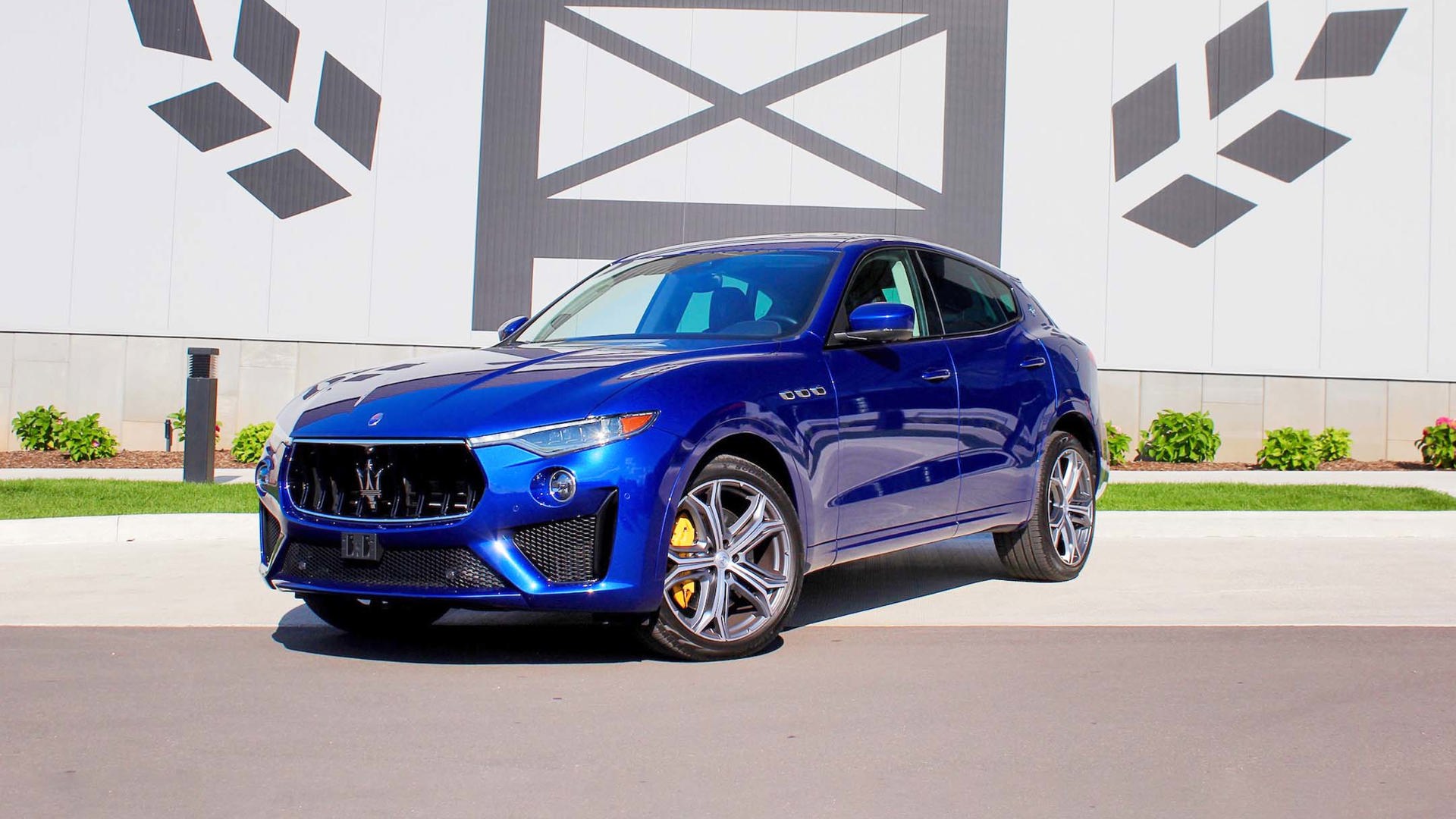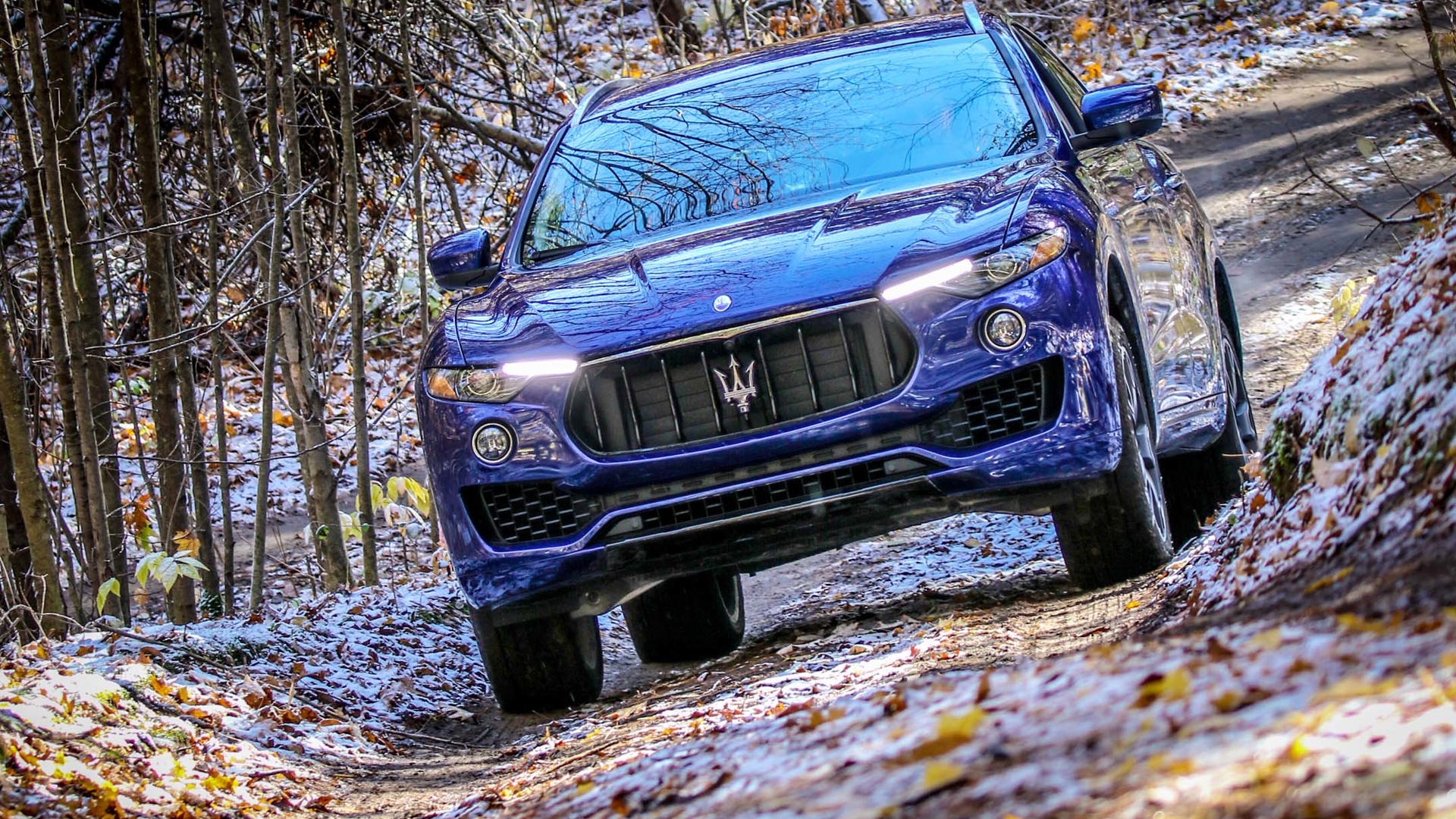 AutoTrader SCORE
AutoTrader SCORE
-
STYLING10/10
-
Safety8/10
-
PRACTICALITY8/10
-
USER-FRIENDLINESS8/10
-
FEATURES8/10
-
POWER9/10
-
COMFORT9/10
-
DRIVING FEEL8/10
-
FUEL ECONOMY6/10
-
VALUE8/10
Ask a lawyer any question and you’ll always get the same answer: “it depends.” Ask a car geek what the “best car currently for sale” is, and you’ll be provided with a similarly frustrating response.
With sport mode engaged, your neighbours will not be impressed, but you will be.
But what if you have more than six figures to spend on a depreciating asset? Surely, there must be one “best” car for that money, right?
Nope.
Enter, the 2017 Maserati Ghibli S Q4, the “best” car for some, and easily overlooked by others. From this writer’s perspective, the only way the Ghibli can be overlooked is if you’ve never driven one.
And maybe that’s the point. Very few drivers, even ones with the means, have actually driven a fabled, stylish, and exclusive Ghibli (or perhaps any Maserati).
The Ghibli is Maserati’s smaller version of the rather large Quattroporte. Both are high-performance luxury sedans with similar exterior styling, but the Ghibli is intended to be the modern and sporty option to the Quattroporte’s more orthodox interior design. Lest you expect the Ghibli then to fit in a compact parking space, be advised that it’s still a big fella. Its length measures in at 4,971 mm, width at 1,945 mm (excluding side mirrors!!), height is 1,4161mm, and the trunk will accommodate 500 litres of gear. Its curb weight is surprisingly svelte considering its size at 1,870 kg.
The interior is well designed and built. Materials used are impeccable. For example, the “Rosso”, otherwise known as “red” leather of my tester, a $2,500 option, is among the finest you can find anywhere, including furniture stores. Walk into the Maserati showroom and you’ll notice that the walls are lined with countless samples of paint and leather hanging on the walls, not advertisements for tires or oil changes. This is intended to be an individual buying experience, not simply a transaction, and the dizzying number of options and packages demonstrate just that.
Look at my tester as an example: 2017 Maserati Ghibli S Q4, starting at $95,800 MSRP. With $17,755 in “personalization” costs, and $2,200 in delivery and destination fees, the final price, pre-tax, is $115,755.
Those personalization options include $1,000 for the “Nero Ribelle” paint, $880 for the Rosso brake calipers, $1,800 for 20-inch “Urano” wheels, $3,275 for the driver’s assistance package (adaptive cruise and surround-view parking camera), $1,300 for the premium package (front and rear parking sensors, blind spot alert with rear cross path, and remote engine start), $1,000 for front seat ventilation, $600 for steering wheel shift paddles, $2,200 for the audio system upgrade, and $3,200 for the Skyhook suspension control. Think some of those options are superfluous? Personalize yours any way you want.
Yes, this is an expensive car, but it is a Maserati through and through. That the Ghibli shares window switches with other cars that cost less is hardly cause for concern: they all work well and feel substantial in hand. And those switches may be the only way that jealous non-owners ever actually get to see parts of a Maserati, because only about 35,000 units are sold worldwide in a year. BMW sells more than that each week.
Maserati uses a human-machine interface (central screen) adapted from systems used widely by its FCA corporate owner. What a great idea; rather than wasting additional costs, modify a tried, tested, and true system that autoTRADER.ca’s writers consistently rank as one of the best available. Its operation is slick, has features a-plenty, and fits well with the rest of the well-created interior. It features both Apple CarPlay and Android Auto if you deem the built-in navigation system to be unacceptable, which you won’t.
Luxury is, in part, about attention to detail. From the aluminum pedals with a solid kick plate beside them, to the smooth opening and closing of each of the ample storage compartments to hide your unsightly junk from plain sight, the Ghibli’s interior is a seriously nice place to be while others in traffic complain about sore backs. Audiophiles should personalize their Ghibli with the 10-speaker, 900-watt Harman Kardon sound system of my tester, though I had it on mute most of the time for reasons that will become obvious as you read on. If you somehow need more from your sound system, the Ghibli can be further optioned to include a 15-speaker, 1,280-watt Bowers and Wilkins system.
My tester is the S Q4, a Ghibli with a higher tune of the base 3.0L V6 engine, providing 404 horsepower (base is 345 hp) and 406 lb-ft of torque to the rear wheels in normal conditions (up to 50 percent can be sent to the front wheels when necessary in a claimed 150 milliseconds). All that power is routed through a ZF-sourced 8-speed automatic transmission, which is spectacular…once in gear.
About that shifter; it feels just right in the hand, but its operation is clunky and non-descript. Three-point turns require extra attention to the dashboard to ensure you’re in the intended gear, as does parking the car. Honestly, it’s the only let down in this otherwise stellar showpiece. Get passed that, and shifts are crisp, quick, and gears are chosen for you such that you’re never left wanting for power, nor hearing unnecessary drone.
Driving the Ghibli S Q4 cannot ever be satisfactorily described in words. It’s a visceral experience that starts seconds after you unlock the doors with the obnoxiously large key fob somewhere near your person. The moment you press the start-stop button on the dash to the left side of the steering wheel, the Italian licentiousness makes itself known as the engine growls to life. It settles down to a gentle hum after announcing its entrance – how kind.
Once you’ve confirmed you’re in drive, you could – if you’re feeling lame – drive away sedately, quietly, and without any effort. You’d be noticed, of course, but only visually, and your drive might be uneventful.
...but you won’t do that. No, not while the “Sport” button is within your reach. Pressing the button to the left of the silly shifter transforms this sleeper into a rude, farting beast that can be heard from a block away at idle. Throttle lift-off gives blow-backs that’ll startle unsuspecting AMG drivers. I kid you not when I say that my test of “normal” mode lasted less than 1 percent of my time with the Ghibli as sport mode was truly too entertaining to disengage.
Did I mention the sound? Oh, the natural, unadulterated sound emitted from the quad tailpipes at the elegant rear. With sport mode engaged, your neighbours will not be impressed, but you will be. Every bloody time. It never, ever gets old, even though it comes from “only” a, gasp, six-cylinder engine.
The sprint from a stop to 100km/h takes about 4.8 seconds – plenty quick by any stretch of the imagination. The 3.8L V8 with 524hp in the larger Quattroporte moves that behemoth to 100km/h 0.1 seconds faster than the Ghibli S Q4 with the V6. So the V6 isn’t slow, it sounds amazing, and it might even save you a few bucks at the pump (maybe?). Fuel tank capacity is an appropriate 80 litres, giving an approximate range of about 550-800 km depending on your right foot. The Ghibli also has a smooth-operating engine stop-start system that can be turned off, but it defaults itself back on each time the car is started.
This beast of a car corners as flat as it drives on straight roads at ungodly speeds, while delivering supple road manners that aren’t upset by even the worst of what Toronto’s potholes have to offer. Ghiblis with “Skyhook” suspension adjustments take the experience several echelons higher without any discernable loss of comfort. I experienced no crashing, bouncing, or jarring motions no matter the road. Honestly, I see no reason to drive without skyhook engaged – it is easily just as comfortable, but refuses to slide absent winter weather underfoot.
This is a real performance sedan, and you better believe it. Comparing it back to back with a 2001 Porsche 911 Turbo, the Ghibli S Q4 cornered flatter and with more composure. It didn’t feel any heavier (it is…), and barely felt bigger while driving (parking is another story…). Sure, the Porsche is faster, and instrumented testing may disprove my unsubstantiated statements about handling, but the Ghibli was, by far, the more fun and comfortable car to drive.
Maserati has a real winner with the Ghibli. While there are some who ignore the performance chops of this car to complain about window switches, owners will continue to grin all day as they drive around one of the best cars available...for them. I’d think Ghibli owners would actually be perfectly happy with the negative reviews of this near-perfect car – they help keep the exclusivity of the beast while the best kept secret remains for those smart enough to know better.
| Engine Displacement | 3.0L, twin-turbo |
|---|---|
| Engine Cylinders | V6 |
| Peak Horsepower | 404 hp @ 5,500 rpm |
| Peak Torque | 406 lb-ft @ 1,750–5,000 rpm |
| Fuel Economy | 14.7/9.9/L/100km cty/hwy |
| Cargo Space | 500 L |
| Model Tested | 2017 Maserati Ghibli S Q4 |
| Base Price | $95,800 |
| A/C Tax | $100 |
| Destination Fee | $2,200 |
| Price as Tested | $115,855 |
|
Optional Equipment
$17,755 – “Nero Ribelle” paint $1,000; Rosso brake calipers $880; 20-inch “Urano” wheels $1,800; driver’s assistance package (adaptive cruise, surround-view parking camera) $3,275; premium package (front and rear parking sensors, blind spot alert with rear cross path, and remote engine start) $1,300; Rosso leather $2,500; front seat ventilation $1,000; steering wheel shift paddles $600; audio system upgrade $2,200; Skyhook suspension control $3,200
|
|
